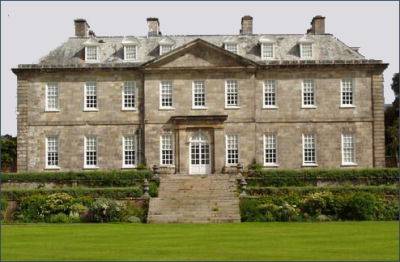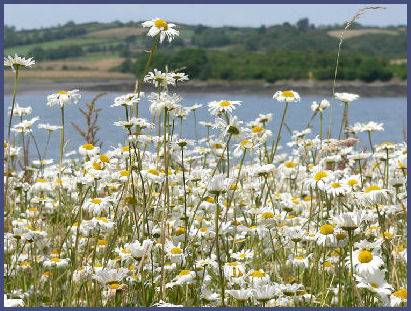Antony House
 Antony House is a handsome eighteenth century house, reputed to be one of the finest Queen Anne buildings in the West Country, is set in an attractive location overlooking the Lynher River.
Antony House is a handsome eighteenth century house, reputed to be one of the finest Queen Anne buildings in the West Country, is set in an attractive location overlooking the Lynher River.
The house has been the home of the wealthy and aristocratic Carew family since the fifteenth century and is now in the ownership of the National Trust. It was given to the Trust by Sir John Carew Pole in 1961, on the provision that the family could continue to reside there for the next fifty years. Sir Richard Crew-Pole and his family still occupy the house.
Antony House was constructed between the years 1711 and 1721 for Sir William Carew. The house is faced with silver-grey Pentewan stone, with two wings constructed of brick joined to to the central block with colonnades.
The house contains a superb collection of portraits, which includes the famous portrait of King Charles I at his trial, as well as works by Joshua Reynolds Among the portraits is that of Rachel Carew, who provided inspiration for Daphne du Maurier's 'My Cousin Rachel '.
 The elegant rooms at Antony House are heavily panelled in Dutch Oak and contain fine collections of eighteenth century furnishings and tapestries.
The elegant rooms at Antony House are heavily panelled in Dutch Oak and contain fine collections of eighteenth century furnishings and tapestries.
Surrounding the house are 25 acres of superb formal gardens, which were established in the eighteenth century and designed by the renowned Georgian garden designer, Humphrey Repton. Hedges of topiary and yew were added in 1800.
The gardens include the national collection of day lilies (Hemerocallis) and have an excellent collection of highly colourful rhododendrons, azaleas and camellias, they also include a beautiful black walnut tree, a Japanese ornamental pond, a formal courtyard and terraces, a knot garden and an eighteenth century dovecote.
The attractive woodland garden, which is not the property of the National Trust, but remains in the ownership of the Carew Pole Garden Trust, posseses some superb Magnolias and offers woodland walks to the visitor which extend down to the River Lynher with attractive views across the river. The Bath Pond Garden House dates back to 1789.
Historic Buildings in Cornwall